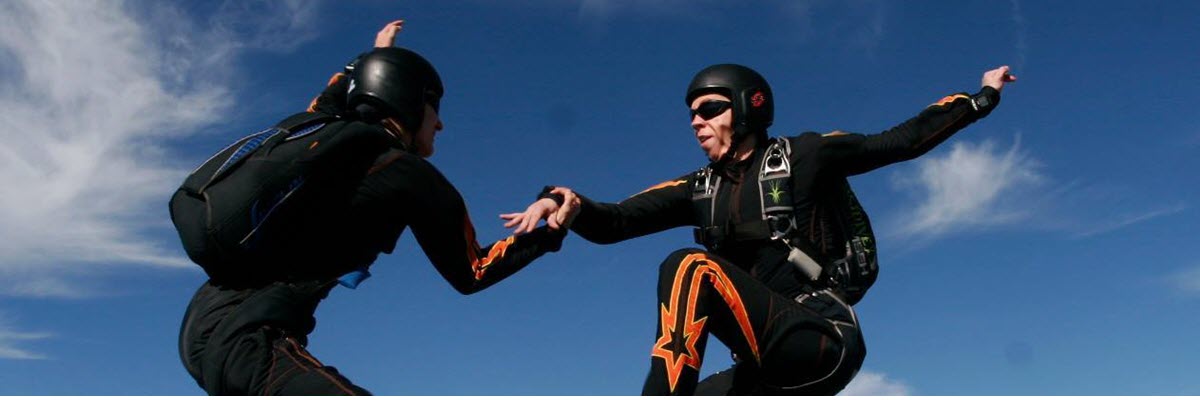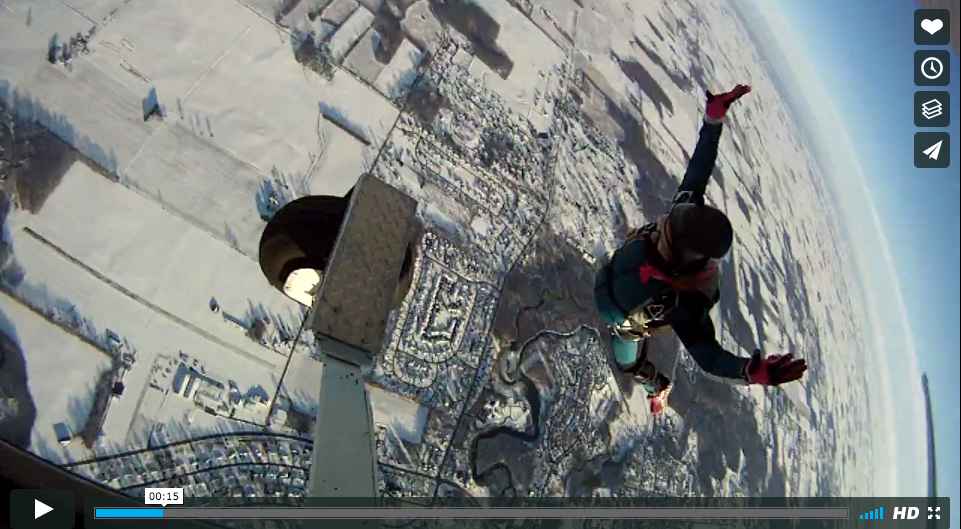- Michigan's Premier Skydiving Center
- Call Now: (517) 423-7720

Earn Your USPA Skydiving License: Why Instructor Assisted Deployment is Better than Static Line
Tuesday, June 26, 2018
- Skydive Tecumseh
- 6/26/18
- 0
- General
When it comes to IAD versus Static Line, a lot of prospective student skydivers have questions. Actually, strike that: a lot of skydivers in general have questions, because IAD and Static Line and pretty darned easy to confuse.
We’re quite sure of our position on the matter. At Skydive Tecumseh, we offer Instructor Assisted Deployment as an option for people who are interested in learning how to skydive, not Static Line. We do so because we’ve thought the matter over very carefully, and it is our well-considered conclusion that IAD is the better method.
What is Static Line?
Originally developed to train soldiers for military skydiving, the Static Line skydiving instruction method has students exit the airplane at around 3,500 feet while their pilot chute is connected to an attachment point on the airplane. Since the pilot chute starts the deployment sequence when exposed to air–and the SL method exposes it to air instantly–the student’s canopy opens immediately upon exit, after which an instructor guides the student down to landing via a radio attached to her/his helmet.
After the first few skydives completed in this manner, the student progresses to her/his first “clear and pull” jumps. On a C&P, the student deploys her/his own canopy. The next series of jumps gradually increase the amount of freefall time before deployment.
In the military context, this method allows a single jumpmaster to get a lot of new jumpers out of the airplane at once without the need to attend each jumper personally. Some dropzones still use SL as a teaching method because it’s traditional and it’s efficient–but it’s pretty low-touch, and it can allow for some hair-raising equipment snafus to go unnoticed.

What Is Instructor Assisted Deployment?
IAD is the direct descendant of the original Static Line Training method, adjusted to allow for more direct instructor oversight. The key difference is this: Rather than have a static line attaching the student to the airplane, IAD has an instructor holding the student’s pilot chute instead. S/he manually deploys the student’s canopy as s/he exits the aircraft at about 3,500 feet.
IAD Has All The Benefits of Static Line (But Not The Negatives)
Since the student enjoys an “instant canopy” on a jump using either of the two methods, the benefits are the same: a strict focus on canopy skills from step one, and lower skydiving training prices. (Because the plane doesn’t go up as high and the progression only requires one instructor, the costs of learning to skydive this way are lower than the Accelerated Freefall (AFF) method.) For this reason, IAD and Static Line appeal to students with limited funds, because each individual jump is generally less expensive than a counterpart jump in the freefall-centric AFF program. Although students are required to make more jumps in most IAD/SL programs, most students find the individual jump costs to be more manageable.
Another benefit, in highly seasonal areas (like our gorgeous Michigan home): because IAD and Static Line jumps are done from lower altitudes, it’s easier to make your training jumps more consistently through the colder seasons.
The benefit of IAD is that the jumper enjoys all that Static Line has to offer without the negative points (for example: the need to transition to a different kind of gear later in the progression and the safety issues that can arise from being attached to the aircraft).
Become a Licensed Skydiver — Your Way!
Skydive Tecumseh is one of the only dropzones in the area that offers IAD training as well as AFF training. That extended range of offerings is part of our commitment to provide the full range of available training methods to suit the individual needs of every new jumper who trains with us. No matter which you choose, after logging 25 jumps (and demonstrating comprehensive safety and flight skills), you’ll be able to test and apply for your USPA “A” License, which is your golden ticket to skydive at almost any dropzone in the world! Let’s get you started today.

I've been here 2 times now and both times have been the experience of a lifetime! I plan on going again next summer as well. When people ask "why jump out of a perfectly good airplane" I reply with "because it's a perfectly good plane to jump out of!!" The people here are amazing and every time someone is looking for a good place, skydive Tecumseh is the only place that I recommend. I also like the fact you can donate the little bears too!!
Kelly Bishop Bono
Copyright © 2025, Skydive Tecumseh, All Rights Reserved.
DropZone Web Design & Marketing by Beyond Marketing, LLC